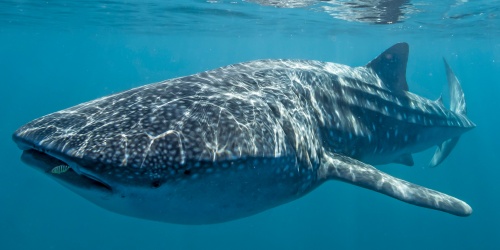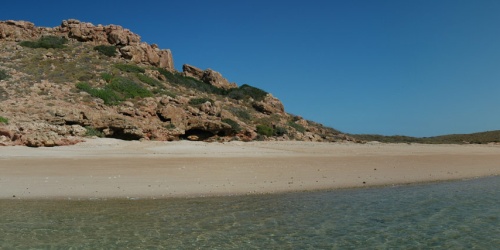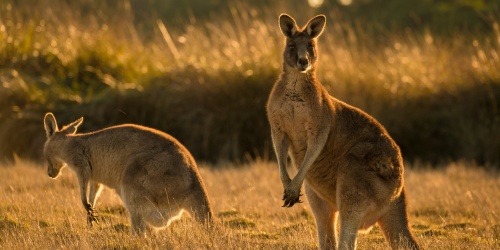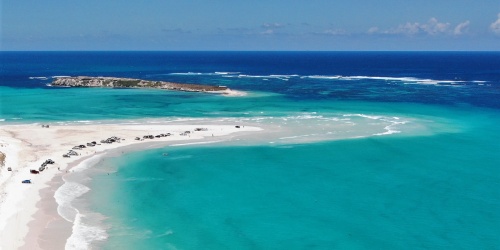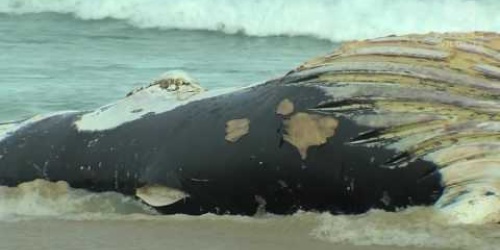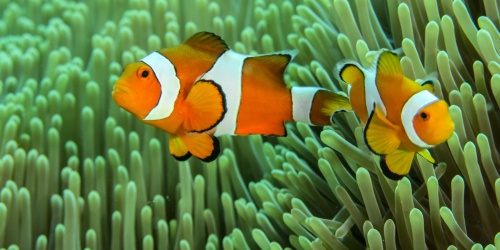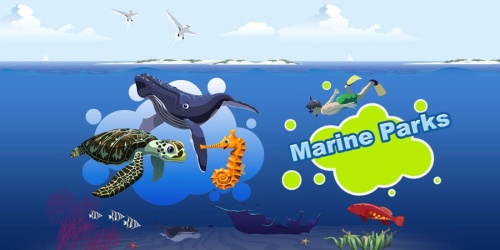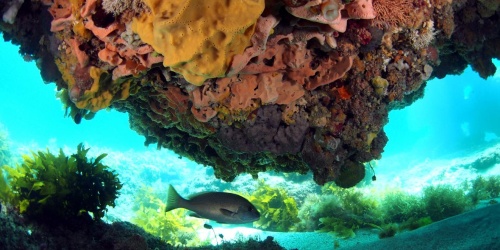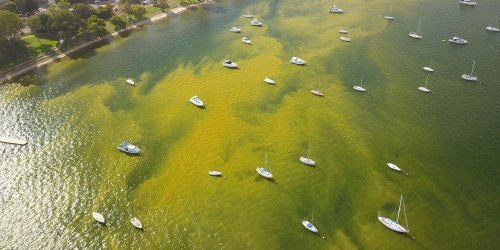Western Australia’s coastline spans more than 13,500km and is home to some of the world’s most remarkable ecosystems and marine wildlife, including massive whale sharks, humpback whales and several threatened species of sea turtles.
The State's marine areas are unique and irreplaceable and, like national parks on land, they warrant protection, so everyone can continue to appreciate and enjoy healthy marine ecosystems into the future.
The waters between Ningaloo Marine Park and the Northern Territory border are of immense significance. The Ningaloo region is a World Heritage Area, because of its outstanding biological diversity. The Kimberley region is one of the most pristine areas remaining in the world.
The marine waters from Shark Bay to the South Australian border protect wonders as diverse as the world’s most extensive seagrass meadows and the world’s largest population of dugongs in Shark Bay Marine Park, the 2000 year old stromatolites in Hamelin Pool Nature Reserve, and thousands of offshore islands providing important breeding areas for sea lions, New Zealand fur seals, little penguins and seabirds.
Rocky shores, sandy beaches, limestone reefs and kelp forests, replete with species unique to southern Australia such as the Australian sea lion, leafy seadragon and ruby seadragon, are found in our warm temperate southern waters.
Marine parks and reserves
Marine parks and reserves have been progressively established in Western Australia since 1987. Marine parks and reserves managed by the Department of Biodiversity, Conservation and Attractions (DBCA) help to conserve marine biodiversity and provide special places for people to enjoy, appreciate and learn about the spectacular marine life of Western Australia.
Western Australia’s 21 marine parks and reserves protect natural features and aesthetic values while enabling recreational and commercial uses that do not compromise conservation values.
Aboriginal culture and heritage objectives aim to ensure marine park design respects Aboriginal culture and connection to Country, protects cultural values and respects customary use of biological resources and Traditional Owner aspirations for Country. Many marine parks are now jointly managed with the Traditional Owners.
DBCA undertakes research and monitoring to ensure that the management of WA's threatened marine fauna and world-class system of marine parks and reserves is based on sound science.
Marine parks also confer economic benefits. They stimulate local economies through raising the profile of marine values and increasing eco and cultural tourism opportunities as well as creating jobs. Ningaloo Marine Park, for example, adds $100M annually to the local economy.
Know your zones
Zoning provides for conservation while allowing sustainable recreational and commercial activities.
While a range of activities are permitted in multiple-use marine parks and reserves, the zoning system minimises conflict by establishing some zones for undisturbed nature study and passive enjoyment of the natural environment and other zones that provide opportunities for extractive activities and use.
Before visiting a marine park, always ‘Know Your Zones' and find out what you can do in each zone.
Each marine park has its own zoning scheme so it's a good idea to download the park brochures.
Sanctuary zones
Sanctuary zones are ‘look but don't take' areas managed solely for nature conservation and low impact recreation and tourism. Sanctuary zones provide the highest level of protection for vulnerable or protected species and important habitats, so extractive activities like recreational fishing, commercial fishing and collecting are excluded. The public is encouraged to visit and enjoy sanctuary zones, with the following activities very welcome:
- swimming
- snorkelling
- scuba diving
- beach walking
- boating
- water sports such as surfing, kayaking, windsurfing, kite surfing, stand up paddle boarding
- low impact tourism like whale watching and sea lion viewing.
Sanctuary zones:
- are fantastic places to enjoy snorkelling or diving, as they have abundant marine wildlife
- protect the full range of marine plants and animals in a particular area, not just fish
- protect important habitats such coral reefs, seagrass meadows, mangroves, rocky shores, sandy sea floors and are often situated alongside islands where seabirds, turtles, sea lions and penguins go ashore to breed
- provide safe places for threatened marine animals and protect nursery areas for rock lobsters and schooling areas for fish
- provide sites for scientists to monitor relatively undisturbed marine environments, which they can compare to adjacent areas where activities like fishing are allowed.
Recreation zones
Recreation zones provide for conservation and recreation, including recreational fishing where appropriate, subject to bag, size and seasonal limits and other conservation measures.
Commercial fishing, aquaculture and pearling are not permitted in recreation zones.
Special purpose zones
Special purpose zones are managed for a particular priority use or issue. This could be protection of a habitat, a seasonal event such as wildlife breeding or a particular type of activity. Uses compatible with the priority use or seasonal event are allowed in these zones.
Special purpose zones can help protect specific habitats from a particular threat or allow for particular activities. For example:
- at Ningaloo Marine Park, special purpose zones for shore based activities allow for shore-based recreational fishing alongside some sanctuary zones
- special purpose zones in many Kimberley marine parks have been established to protect sites that are culturally important to the Traditional Owners
- at Shoalwater Islands Marine Park, a special purpose zone for wildlife conservation has an 8 knot speed limit to limit the risk of boats striking Australian sea lions, penguins, dolphins and to reduce disturbance to nesting seabirds
General use zones
General use zones are areas within marine parks where activities such as sustainable commercial fishing, aquaculture, pearling and petroleum exploration and production are permissible provided they do not compromise conservation values.
Some parks may have additional restrictions in their general use zones, so always check the park brochure before visiting a particular park.
CAR marine reserve system
To comply with and meet the obligations in national and international agreements and conventions, a National Representative System of Marine Protected Areas is being developed by the Commonwealth and all of the Australian States and the Northern Territory. Central to this work—and similar to that underpinning the terrestrial reserve system—is the idea of a Comprehensive, Adequate and Representative (CAR) reserve system.
A Comprehensive marine conservation reserve system is one in which all major bioregions have marine reserves within them. In WA, 19 major bioregions have been identified and the CAR system will eventually consist of a network of marine reserves throughout the State.
Adequate refers to the number, size, configuration and level of protection of the reserves within a bioregion—a few very small reserves are not truly sustainable in the long term, especially in the ocean where currents and other conditions create a high degree of connectivity between different areas.
The reserves also need to be Representative of the ecosystems within the bioregions. This means that all species of plants and animals found in Western Australian waters will be represented somewhere in our marine reserve system.
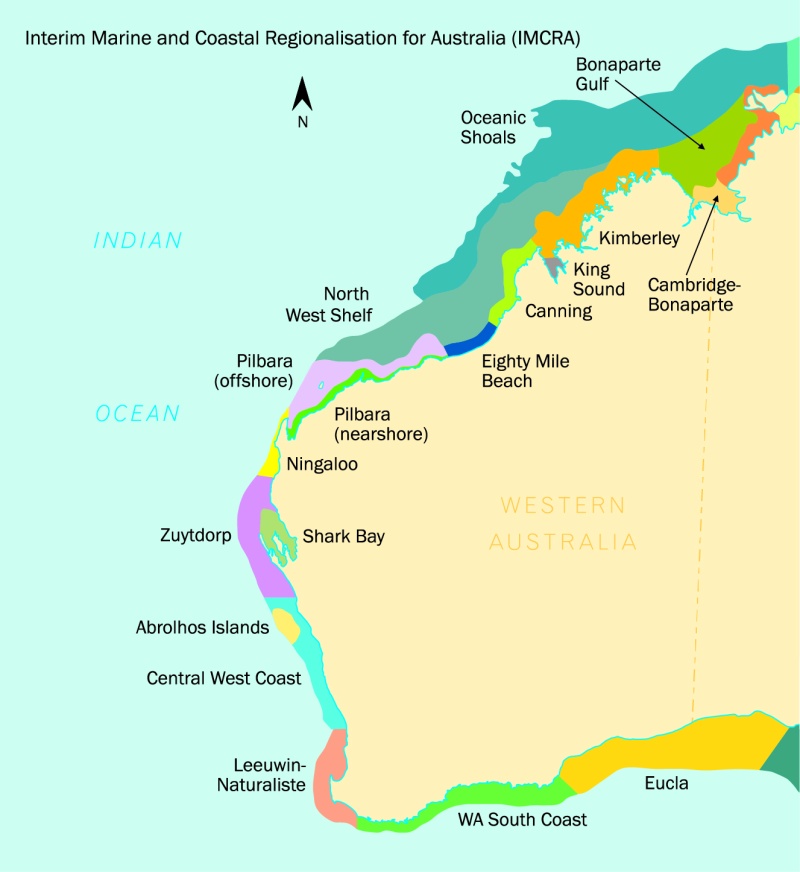
Types of marine parks and reserves
Marine parks are created to protect natural features and aesthetic values while allowing recreational and commercial uses that do not compromise conservation values.
Marine nature reserves
Marine nature reserves are ‘look but don't take' areas created primarily for conservation and scientific research and are designed to protect a particular significant ecosystem or habitat.
Low-impact tourism may be permitted, but no recreational or commercial fishing, aquaculture, pearling, petroleum drilling or production is allowed. Hamelin Pool Marine Nature Reserve, where 2000 year old stromatolites can be found, is currently the only marine nature reserve in Western Australia.
Marine management areas
Marine management areas provide an integrated management structure over areas that have high conservation value and intensive multiple-use.
There are two marine management areas in Western Australia: Muiron Islands Marine Management Area and Barrow Island Marine Management Area.
There are 18 marine parks in Western Australia:
- Walpole and Nornalup Inlets Marine Park
- Ngari Capes Marine Park
- Shoalwater Islands Marine Park
- Swan Estuary Marine Park
- Marmion Marine Park
- Jurien Bay Marine Park
- Shark Bay Marine Park
- Ningaloo Marine Park
- Barrow Island Marine Park
- Montebello Islands Marine Park
- Rowley Shoals Marine Park
- Lalang-garram / Camden Sound Marine Park
- Eighty Mile Beach Marine Park
- Lalang-gaddam Marine Park
- Yawuru Nagulagun / Roebuck Bay Marine Park
- North Kimberley Marine Park
- Bardi Jawi Gaarra Marine Park
- Mayala Marine Park.
